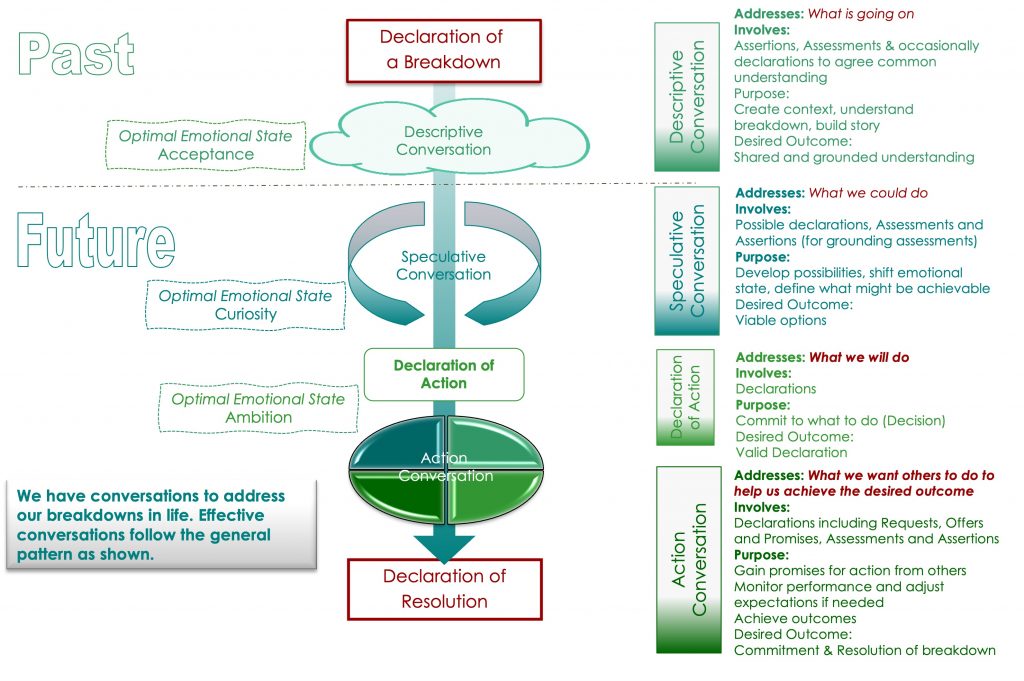
Like many things we do in life, we have learnt how to have conversations simply by observing and engaging with others. In general, we are not taught how to have effective conversations with others to address our or their concerns. Indeed, most people would not see conversational practice as something to learn other than in specific instances such as negotiating, dealing with conflict or giving feedback.
Yet there is a flow of certain types of conversations that can be effectively used to address our own concerns and that of others. This pattern of conversations follows a path created by four key questions:
- Where are we (I) now? (What is going on?)
What do I understand the situation to be and do others share that same understanding? These conversations are all about developing and enriching the meaning of what is being discussed and developing and agreeing a shared interpretation with others. If we are dealing with a particular concern, then these conversations establish clarity about what is to be addressed.
These conversations are known as ‘Descriptive Conversations’.
- What could we (I) do?
Once we are clear about what we are seeking to address, we move into a conversation to find possible ways to address the agreed concerns. When done well, these conversations find new ways to address the concern leading to some viable options to move towards a decision point about what to actually do.
These conversations are known as ‘Speculative Conversations’.
- What will we (I) do?
This is not so much a conversation but a decision point where declaration is made by someone with the authority to make such a declaration and designed to initiate action to directly address the agreed concern.
This decision is known as a ‘Declaration of Action’.
- How will we (I) do this?
These conversations are all about how to get things done and focuses on the making and honouring of promises and ultimately on resolving our concerns and bringing forth a new reality for those involved.
These conversations are known as ‘Action Conversations’.
To be clear, this is not a rigid pattern. The word ‘conversation’ originally comes from the Latin word ‘conversare’ which loosely translated means to turn together. Conversations are not so much a step by step process but a dance. We weave in and out of topics and ideas moving backwards and forwards between the past and the future. However, if we wish to address our concerns in life, we can be well served by staying on an effective conversational path – understanding, possibility, decision and action.

Overall, the pattern for effective conversations follows the path as shown in the diagram. We begin with a declaration of a breakdown or some concern we wish to address.
We then enter into a descriptive conversation ideally to create and enrich the meaning of our situation. If we are in conversation with someone else, then these conversations present the opportunity to develop a shared meaning about what is going on. Descriptive conversations are identifiable through the focus on the past and what already exists for us. We are describing the world as it is for us in this moment.
At some point, we transition into a conversation about how things could be. We initiate a speculative conversation to seek possibilities that might address our concerns. In doing so we turn the conversational focus from the past to the future.
However, we cannot just keep thinking about what we could do. To address our concerns, we must decide to take some sort of action. We must come to decision point and make a declaration of action.
Finally, the path we choose often involves others and so we need to enrol them in coordinated action. To do so, we make requests or offers seeking promises for certain actions to be taken or making offers to address their concerns. Ultimately, these promises will hopefully resolve our breakdown and address our concerns.